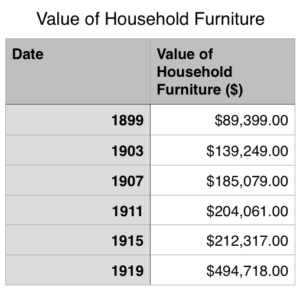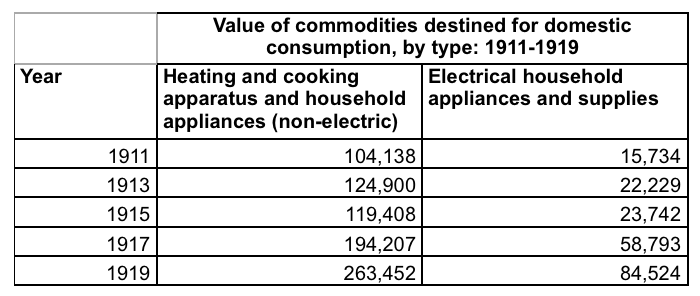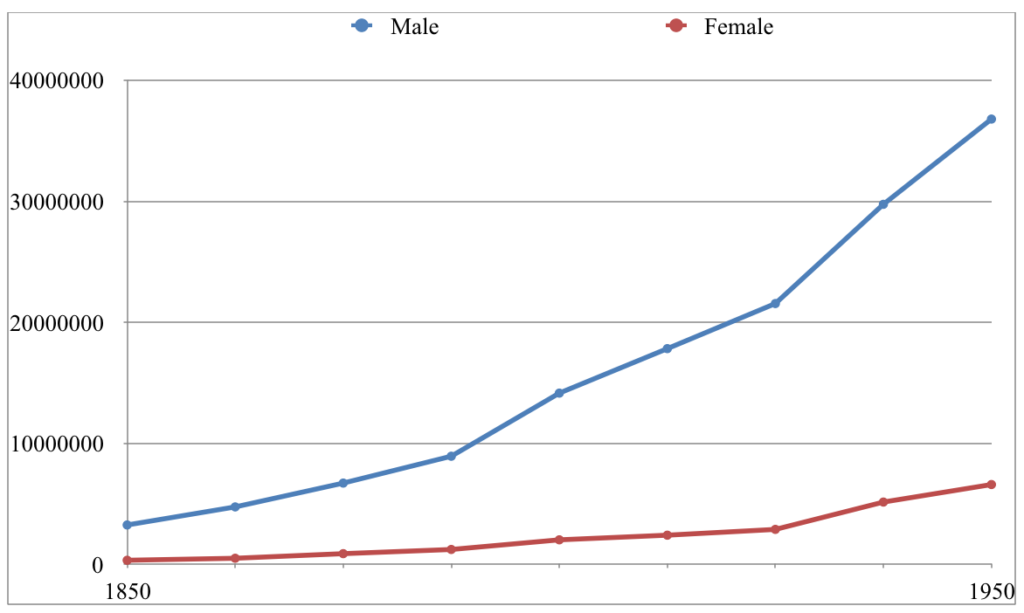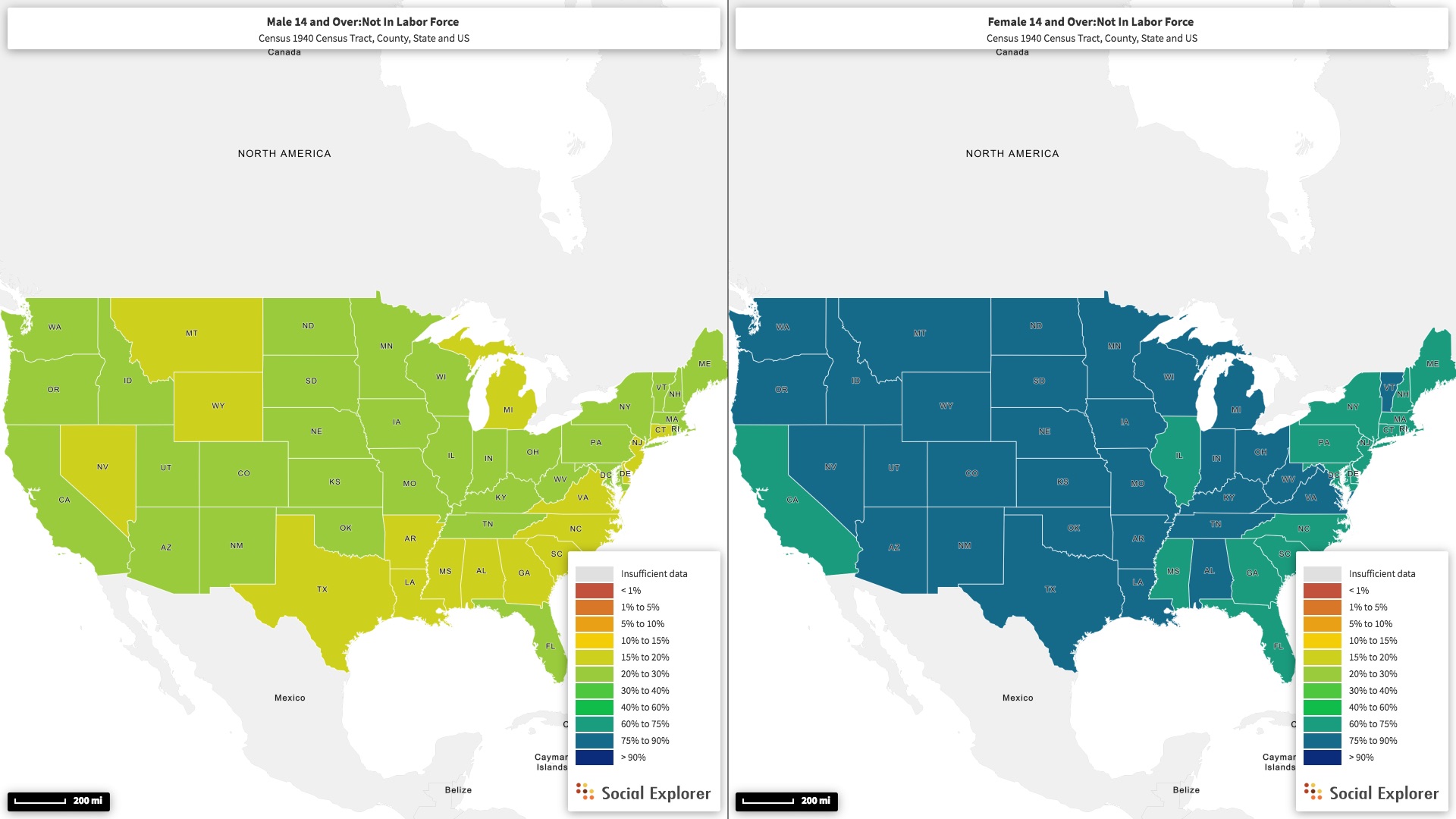The increasing value of household furniture offers an interesting data set, from which I was able to draw conclusions and infer certain aspects of life for women within the home. Within a 20 year period, between 1899 and 1919 the value of household furniture increased by more than 5x, from $89,399 to $494,718, suggesting that making home was becoming increasingly important. This came alongside a rise in the occupancy of ‘proper’ homes, or those that were more than single occupancy rooms. This rise in the value of furniture alludes to ideas of the role of women in home making practices, that is, making the home a more comfortable and pleasant space for the man. This has links to gender roles within the home which is evidenced aptly in ‘The Domestic Blunders of Women: By a Mere Man’ in which the role of women in the home is detailed, alongside the failings of women to do so. Blunt (2005) refers to the role of media such as magazines and newspapers in promoting the ideal home to women, advertising home furnishings. This increase in advertisements further demonstrate the importance that was placed, particularly on women, on making home. These ideas are also displayed through the image of the woman and her daughter working together in the kitchen, in which the two of them are seen using their first proper kitchen, outside of the single occupancy room they had lived in previously. Here we can also infer about the ways in which the advertising of products divided demographics by class, where adverts would be more accessible and impactful for the middle classes who could perhaps more easily afford new house furnishings.
A further examination of this rise is available here.

Value of Household Furniture 1899-1919
In addition to this, the increasing value of appliances, in particular the rise in electrical appliances, suggests changing domestic patterns within the home. While my research suggests women were assumed to be the gatekeepers of the domestic space, the increasing use of electrical appliances hints at changing patterns of domestic work, with the introduction of more efficient, easy to use appliances and the rise in pre-packaged, processed foods. Domestic space was becoming easier to navigate, for example, where previously vegetables would have required preparation and careful cooking, the growth in electrical appliances such as ovens and refrigerators made it easy to prepare food and keep it fresh. In terms of how this may have impacted the lives of children, the freeing up of more time may have allowed women to play a wider role within the family, perhaps shifting ideas of gender roles for children as they see their mother performing roles she may not have before.

Data also illustrates the differences in employment between women and men, where men were employed at a much higher percentage than women. Again, from this I was able to infer that these differences in employment were due to the more prevalent role of women within the home. Through this data we again see the role of men as the breadwinner and the role of women as homemaker. The reinforcement of patriarchal roles within the home is discussed by Bowlby (1997; 347), who suggests that the home is “the point at which patriarchy and inequalities in power between men and women and children are created, maintained, and reproduced.” Employment data allows me to infer certain aspects of home life in relation to men and women and the roles they were expected to play. Perhaps women were less likely to be employed because their space was seen as domestic and their roles including the rearing of children and the making of home, while men were more likely to be employed because of their perceived role as breadwinner and provider.
Data showing the heads of household across the US brings into the discussion issues of race and gender while displaying gender roles in homes. Data shows that within a 100 year difference, white males made up around 75-80% of the heads of household, white women made up around 10%, black males 4% and black women around 1%. I was able to use this data as a lens through which to view race and gender as determinants of childhood experience. In terms of gender roles, the vast majority of heads of household were male, again reinforcing the idea of the male as the provider, while women made up a very small number of heads of household in comparison. This also extends into discussions of race, where the black demographic made up a very small amount of heads of household. We can refer to different factors here, most notably the race relations that existed throughout this period of time including segregation and discrimination. Madigan (1999) discusses the ways in which the physical layout of the home reflect the ‘ideals of the bourgeois family’. These ideals may include a male head of household for example, reinforcing the idea of gendered boundaries and divisions within the home.

Male vs. Female head of household

